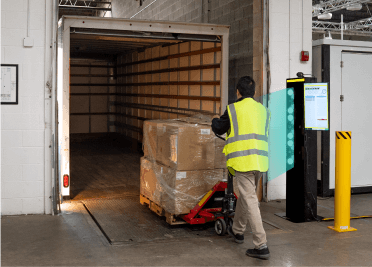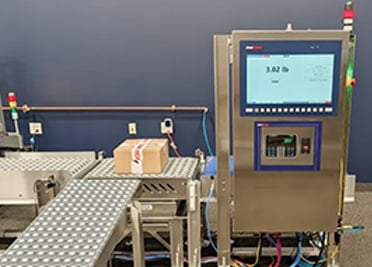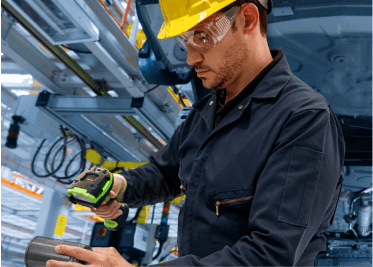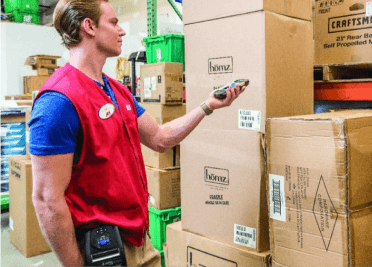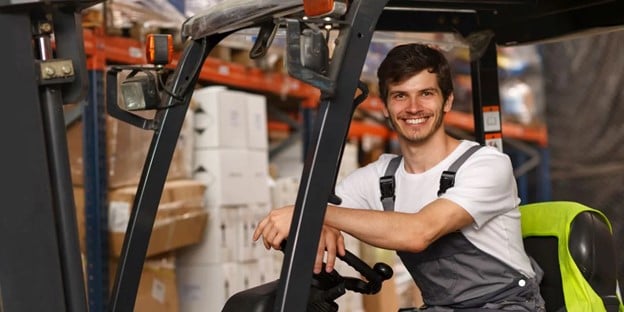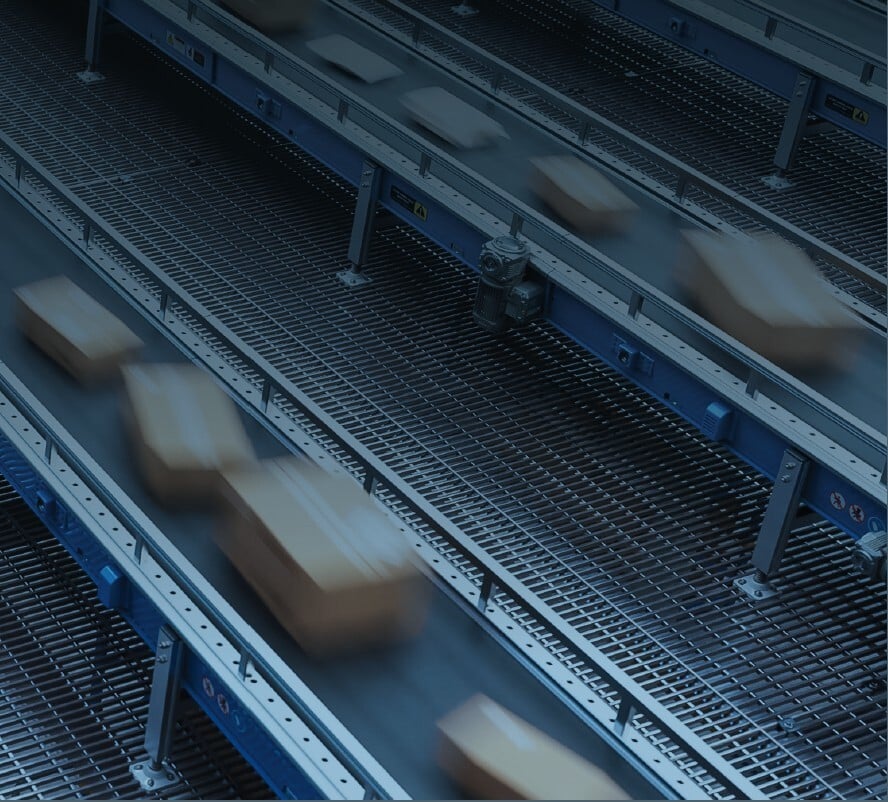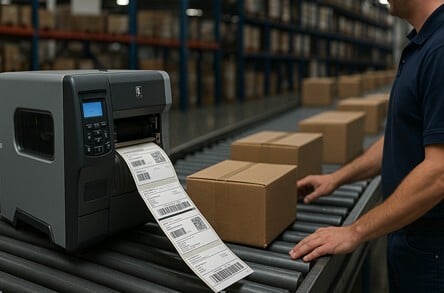Ruggedized Vehicle Mount Computers have been in enterprise industrial operations for many years. Many enterprises have been looking for innovative ways and use cases of whether it makes sense to include a tablet in their device portfolio landscape. One of those use cases involves being mounted to vehicles such as forklifts, trucks in a warehouse, DC and commercial settings.
Historically the solutions for vehicle-mounted computers have been just that. Computers resembling laptops without keyboards, or with keyboards built into the front panel, or touchscreen computers that use a stylist or finger to manipulate the device. These computers were attached to vehicles with a variety of mounting brackets and docking stations. This is what they called rugged vehicle-mounted computers. As technology changed and tablets became larger, more powerful and more durable, added to their versatility, the thought was to mount them in vehicles too. In order to do so, the tablets needed to evolve from basic consumer-grade tablets that you might use in your living room to surf the web to something that could withstand the harsh environments of warehouses, trucks, temperature extremes, and tremendous vibrations. Thus, the birth of the rugged tablet.
It is important to understand the tradeoffs between consumer-grade tablets and rugged tablets for mounted use in enterprise settings. Some of the issues to evaluate include the following:
- Is the design and mounting appropriate for a warehouse, distribution center, or commercial environment?
- What is the everyday use-case for the tablet?
- How will the tablet be powered?
- Is the tablet compatible with data collection equipment (scanners, printers, RFID), warehouse management systems (WMS), fleet management solutions and other critical enterprise systems?
- How will tablets impact user processes and productivity?
- How much will tablets really cost?
This article is for readers interested in automating warehouses and industrial environments and focuses specifically on enterprise-grade tablets.
Mounting & Survivability Considerations
A key distinction between consumer tablets and purpose-built rugged tablet computers is how they withstand vibration. This difference isn't visibly noticeable just by looking at the table, but its effects can be seen over the device's lifespan. Computers mounted to vehicles like forklifts experience substantial vibration, which can wear down internal components if the mounting doesn't adequately protect the computer. Shock and vibration resistance are core requirements for all vehicle-mounted computers, but merely meeting a ruggedness standard and having an available mount is not enough to ensure reliable performance.
Vehicle vibration profiles. Forklifts have different vibration profiles than vehicles that are driven on the road, such as an ambulance and delivery truck. Mounts designed for these vehicles and adapted for forklifts may not provide adequate protection. There is a difference between simply fitting a computer to a forklift/vehicle and truly protecting it from shock and vibration. When considering tablets, verify that a proper mount is available (and whether there will be an added cost). Also, ask for test results performed in the laboratory and real-word vibration testing.
Frequent removal from the mount. Another mounting consideration is if tablets are intended to be frequently removed from the vehicle and used for operations on the floor or field. Make sure the tablet can be removed and replaced conveniently and without undue risk of damage to the connectors over the long-term.
Power Considerations
Vehicle-mounted computers usually run from the vehicle's power supply, a DC battery. Consumer-grade tablets typically run from their own battery. Therefore, a DC-to-DC power converter is required to use a tablet on a forklift/vehicle. Running a consumer-grade tablet on its own battery power is not an option because commercial environments like warehouses have transaction volumes (including scanning and wireless communication) that would require batteries to be recharged multiple times each shift. While DC power conversion is not an unsolvable challenge, it does add time, cost and complexity to the installation.
DC Converter Box. The converter box requires one cable from the vehicle battery, and a second cable to transmit the converted power to the tablet. The purchase price and future maintenance costs of these additional components should be considered in the total cost of the tablet implementation.
The next challenge is to effectively mount the converter and place the cables. This typically is not an issue with purpose-built rugged tablet computers, which run on DC power and whose cables may be run through the vehicle mounting to reduce exposure and the risk of damage. When a DC-to-DC converter is needed, the box and its cables must be strategically placed so they do not interfere with vehicle operation or inconvenience the operator and are not exposed to moving parts and potential damage. Loose cables represent a safety hazard and reliability risk because they can snag or break. The converter and cables represent new potential points of failure and working through the installation issues adds to implementation time.
Mounted rugged tablets are designed to get their power from the vehicle battery without the DC power conversion and can easily run on their own battery when removed from the vehicle for an entire shift. The mounting assembly is specifically designed for commercial use and poses no point of failure.
Power Management Solutions. Power management solutions often cannot be leveraged across the enterprise fleet because different vehicles are often used at different locations, or even within the same location. For example, electric forklifts are typically only used for indoor operations. These vehicles are powered by large batteries that range from 36V to 72V, depending on the model. These batteries need to be recharged at the end of the shift, which often involves removing the battery from the vehicle and replacing it with a charged battery. During the changeover, the forklift-mounted computer has no battery to draw from, so it will shut down and data and settings could be lost unless the computer has an uninterruptible power supply to keep sessions active.
The rugged tablet is designed with an internal battery that keeps the computer running even when a battery change is made so there is no loss of data.
Diesel-powered Forklifts. Diesel-powered forklifts do not require battery recharging (the battery is powered by the alternator) but pose other power-management challenges. The computer continues to draw a small charge from the forklift battery even when the computer and vehicle are turned off. Over a weekend, this draw can be enough to drain the battery to the point that the vehicle cannot start when work resumes on Monday morning. This problem is prevented by building a charge guard into the computer, which is a differentiating feature between computers built to be used on forklifts and those that are adapted to the task. Additionally, diesel forklifts have 12V to 24V batteries, whose output can drop to less than 6V when the vehicle is started. This drop in power output can cause the connected computer to shut down unless the device has power management features designed for this usage environment. A sudden computer shutdown may result in data and transactions being lost and will definitely result in lost time and productivity during the reboot.
Cold Storage Operations. Cold storage operations create additional power demand and usability challenges. Computers used in cold-storage environments require an internal heater and a heated display to prevent frost and condensation from making the screen unreadable when the forklift transitions in and out of cold storage areas. These features are not available for consumer tablets, because they require more power than a tablet battery can provide.
Compatibility Considerations
Vehicle-mounted tablets must not only be fit for the physical environment, but for the distinct industrial IT environment. Commercial drivers use their tablets to access WMS and other specialized applications; enter data through barcode scanning, voice and RFID; and have special device management and wireless communications needs.
Peripheral support is a key consideration. Consumer tablets are designed for touchscreen input. Purpose-built mounted computers also typically support touch, but barcode readers are the most widely used input devices on forklifts and keyboards are also common. Therefore, to preserve well-established and productive work processes, tablets would need to support bar code scanners/scanning and all the other input devices (e.g. keyboards, voice, RFID, monitors) that are currently in use.
Supporting various input devices means having adequate interface ports and being able to recognize and process the incoming data stream. The ports need to have covers that will protect the connections from all types of weather. Peripherals should mount securely, and cables should be placed to minimize the risk of tangling or snagging.
Wireless Security. Deploying tablets or any other new computer to a vehicle should not require the enterprise to compromise on its wireless security, device management standards, and interface protocols.
User Considerations
Tablets in commercial settings are designed for workers to be able to easily mount and unmount the device so it can be carried on foot for in-store, factory or warehouse floor or in a field service situation.
Vehicle-mount tablets are a great choice for those environments where workers are tasked to perform a mix of vehicle-based and floor-based activity, such as remaining in the forklift for picking and put away while also leaving the vehicle to conduct inventory cycle counts. Tablets can be a viable solution for the hybrid environment, but it is important to determine whether this need stems from the desire to streamline work processes or results from a desire to update equipment and introduce tablet computers.
There are several features and characteristics rugged tablet computers need to have to effectively support workers in non-vehicle operations. The ergonomic requirements change when vehicle-mounted computers are detached and carried.
Weight. Weight becomes an important consideration when the operator has to carry and hold the device while performing activities. Besides being easy to hold and use, the tablet should have conveniently placed interface ports for barcode readers and other peripherals that may be used.
Drop Resistant. All computers that get carried will eventually (and often repeatedly) get dropped, so a good drop-resistance rating and crack-resistant screen are advantageous. Tablets for use in warehouses, yards, shop floors and other environments should be rated to withstand repeated drops to concrete (some drop-resistance ratings listed on product specification sheets cite test results from drops to carpeted floors).
Power Management. Power management is another important consideration. When computers are detached from the vehicle, they run on their internal battery instead of the vehicle power supply. So, if plans call for hybrid on-vehicle/off-vehicle operations, perform testing to see if the battery life is sufficient to power all non-vehicle operations. The battery life listed on the spec sheet will not answer this question because battery life varies in real-world conditions. Wireless communication, barcode scanners and other peripherals all consume power and can keep the computer from achieving its maximum stated battery life.
Cost Considerations
Consumer grade tablets can appear to be a lower-cost option, which is driving interest in the category. When used in ruggedized purpose-built situations, the list price of a tablet can be significantly different. As previously documented, to use a consumer tablet on a forklift, it may be necessary to purchase the following accessories typically included in the price of a purpose-built forklift computer:
- Vehicle mount
- DC-DC power converter and cables
- Battery chargers and extra or replacement batteries
- Specialized dock with required interface ports (serial, USB, power)
Organizations may also incur software development costs to make the tablet compatible with legacy applications, provide terminal emulation and accept bar code, RFID and voice input. Acquiring and integrating these extras also increases the deployment time and cost. When comparing costs between specific models of computers for forklifts, it is imperative to compare the total cost of ownership, including the cost of peripherals and accessories, the expected failure rates, downtime and device lifecycle, and the time required for installation, maintenance, device management and support.
Honeywell Family of Vehicle Mount Computers
Honeywell has a complete line of vehicle-mount computers that is represented by the ThorTM family and the Honeywell RT10 Tablet. These computers reflect our extensive knowledge and commitment to serving the needs of supply chain operations of all sizes, in the toughest environments. Benefits of the Honeywell computer portfolio include powerful, flexible and application-expandable solutions to future-proof your operations, rugged construction to minimize downtime and maintenance.
The Thor VM1A and VM3 are top considerations for traditional vehicle-mounted computers.
- Thor VM1A, the world's top-selling vehicle-mounted computer, upgraded to Mobility EdgeTM. Hits the sweet spot of overall size, display size, and keypad. The Smart Dock enables use on multiple vehicles and reduces support and maintenance costs. A field-replaceable front panel minimizes downtime. The VM1A supports the Android operating system.
- Thor VM3, designed for the toughest distribution center environments, manufacturing facilities, terminals, ports and freight operations. In fact, it's the industry's most capable full-size vehicle-mounted mobile computer. The VM3 computer combines a 30.73 cm (12.1 in) display with breakthrough innovations that deliver rapid value for your workflows. The VM3 supports both Android and Windows operating systems.
The Honeywell RT10 Rugged Tablet is a great option to also consider.
- RT10. With its 10.1-inch bright, high-resolution, optically bonded display and a light yet durable form factor, the Honeywell RT10 rugged tablet is easy to use all day long, making it perfect for rapid user adoption. For data capture, the FlexRange dual-lens imager is capable of scans less than 0.1 m (5 in) all the way out to 10.7 m (35 ft), so users can easily capture barcodes from across the room without having to waste time getting close enough for a scan. With its rugged drop specification and IP65 rating, the RT10 is built to last, and its hot-swappable battery packs can save you the hours of downtime that can occur when a device loses its charge. The RT10 supports both Android and Windows operating systems.
The VM1A, VM3A, and RT10A are built on Honeywell's Mobility Edge™ platform –including the ability to accelerate provisioning, application certification, and deployment across the enterprise. Honeywell's Mobility Edge™ delivers an innovative solution to these challenges. Mobility Edge offers an integrated, repeatable, scalable approach to device management that is based on a common hardware and software platform. Designed for Android™1 , it delivers a unified platform on which all software solutions are based. You can develop and deploy faster while reducing development costs.
Conclusion
The popularity of ruggedized tablet computers is making strong inroads into forklift workflows. The installation, operation, features, and functions are close enough to traditional vehicle-mounted computers to make many customers consider them as solutions. Organizations that consider introducing tablets to perform forklift-mounted computer functions need to consider how the product categories' fundamental differences will benefit or impact operations. Without reviewing these issues, using tablets on forklifts can cause unexpected installation and integration delays and expenses, resulting in excessive maintenance and reduced user productivity. The key to avoiding these problems is finding the product that best matches the existing work process.
To learn more about Honeywell's vehicle-mounted computers, get answers to your questions, and find out if this solution is the right fit for your business, contact an AbeTech Solution Expert today!
